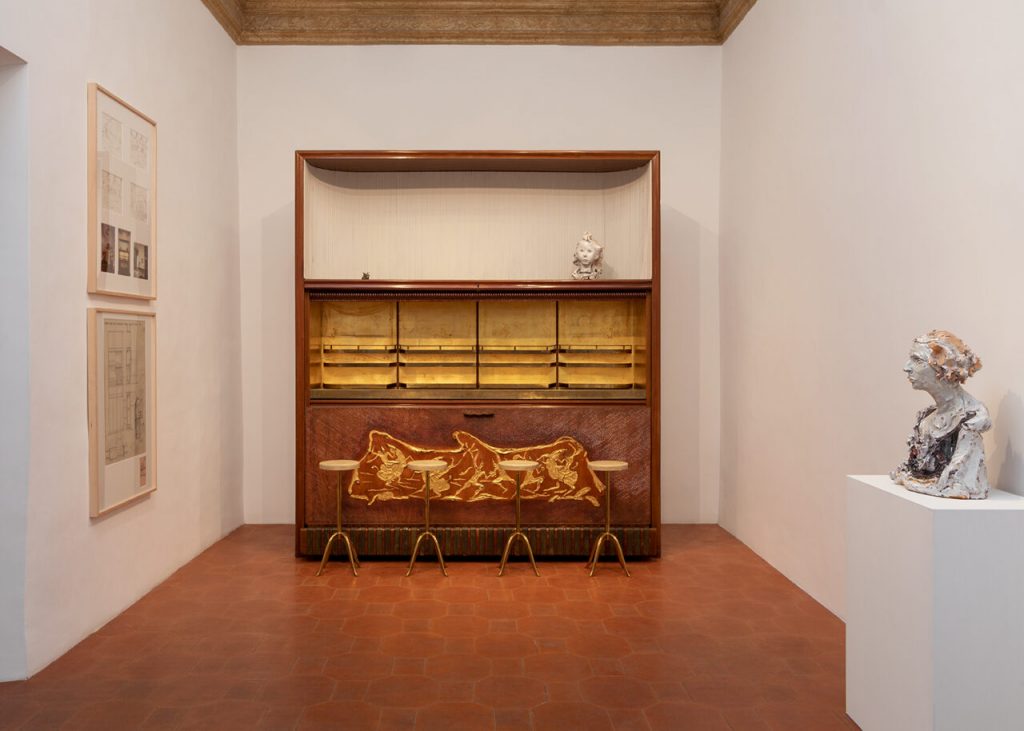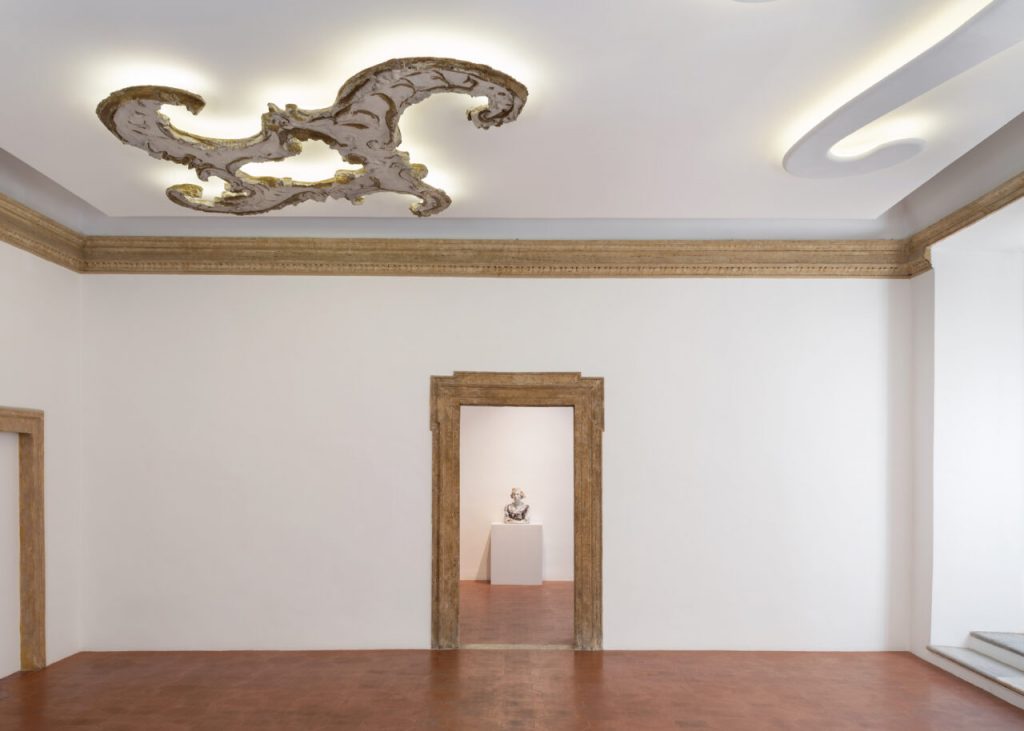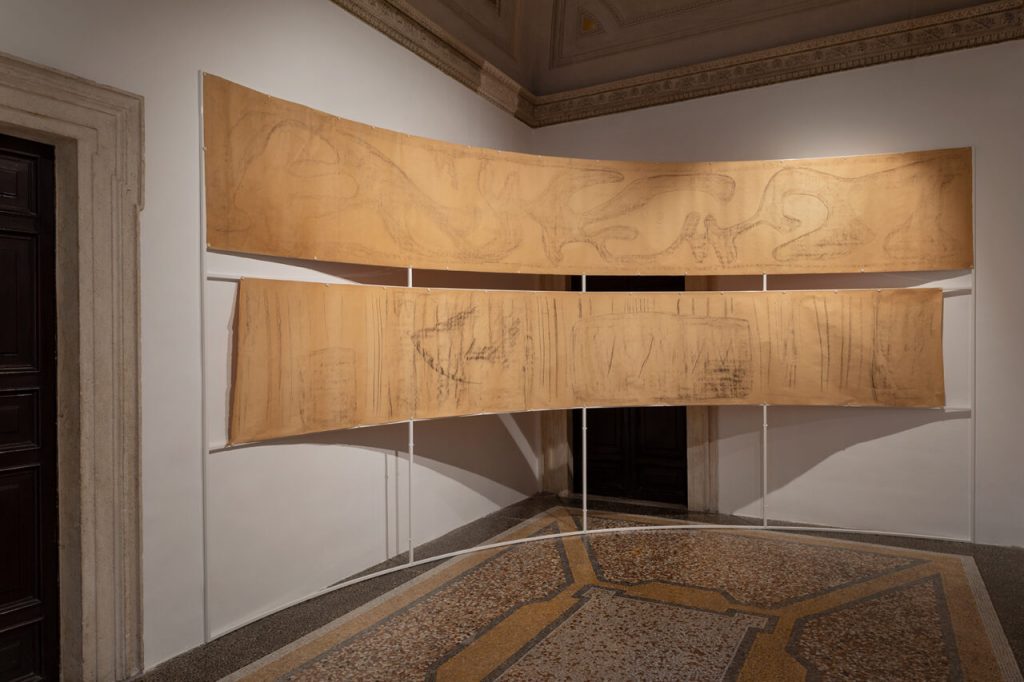The Remarkable Collaboration Between Lucio Fontana and Architect Osvaldo Borsani Is the Focus of an Eye-Opening Exhibition


Artnet Gallery Network

Osvaldo Borsani and Lucio Fontana were two titans of mid-century Italian culture. Fontana, a founder of the Spatialist movement, and Borsani, a leading modernist architect and designer, also frequently collaborated together.
Now, an exhibition at Galleria Mattia de Luca in Rome is retracing the most significant achievements of their creative partnership from the late 1940s and throughout the 1950s.
Most significantly, the exhibition attempts to recreate Casa G., an apartment designed by Borsani in the center of Milan, where the designer collaborated with influential artists, and prominently Fontana. The gallery has many of their collaborative works on view, including sculptural home fixtures, which are a testament to the fusion of two perspectives coming together to form an innovative vision.
The gallery focuses on the coexistence in the apartment of Baroque elements and Fontana’s and Borsani’s interest in Spatialism. From 1947 to 1956, the artist and architect attempted to harmonize the apartment’s spaces through interior projects featuring intricate plastic work combining figurative and abstract elements.

Installation view “Lucio Fontana | Osvaldo Borsani,” 2020. Courtesy of Galleria Mattia de Luca.
Famous among these is Soffitto (1949), a “total sculpture” reinstalled in Galleria Mattia de Luca. At once a lighting fixture and a light sculpture, Soffitto would prove influential for Fontana’s light works of the 1950s.
“Soffitto masterfully embodies Lucio Fontana’s early research on neon light,” said gallerist Mattia de Luca. “The light seems to be produced by the three main components of the work: namely, an arabesque form and two others sinuous spirals. The emanation of light therefore defines and accentuates the outline of each element, as well as the space of the room, offering an experience of spatial art.”
Another notable Casa G. work is Bar Unit, also from 1949, a functional bar that freely reinterprets equestrian themes.

Installation view “Lucio Fontana | Osvaldo Borsani,” 2020. Courtesy of Galleria Mattia de Luca.
The exhibition culminates with a display of Fontana’s original drawings, created in 1956 for the facade of Borsani’s design project for the Tecno headquarters in Milan, and which still adorn the first floor of the historic building.
These are shown alongside an important body of works and pieces of furniture from the same period highlighting the myriad intersections and influences of different aspects of Italian art of that generation. Meanwhile, a series of ceramic busts Fontana made of Borsani’s family members are also on view, reflecting the friendship the two enjoyed.
The exhibition also marks a new stage for the gallery: after a two-year collaboration with Sergio Casoli gallery as Casoli | De Luca, Mattia de Luca is taking the gallery forward on his own.
Not much will change, however, as De Luca said that the gallery will continue to “work on ambitious projects focusing on the modern masters of the 20th century and world-acclaimed contemporary artists.”
See Soffitto upclose in the video below.
“Lucio Fontana | Osvaldo Borsani” is on view at Galleria Mattia de Luca through January 23, 2021.